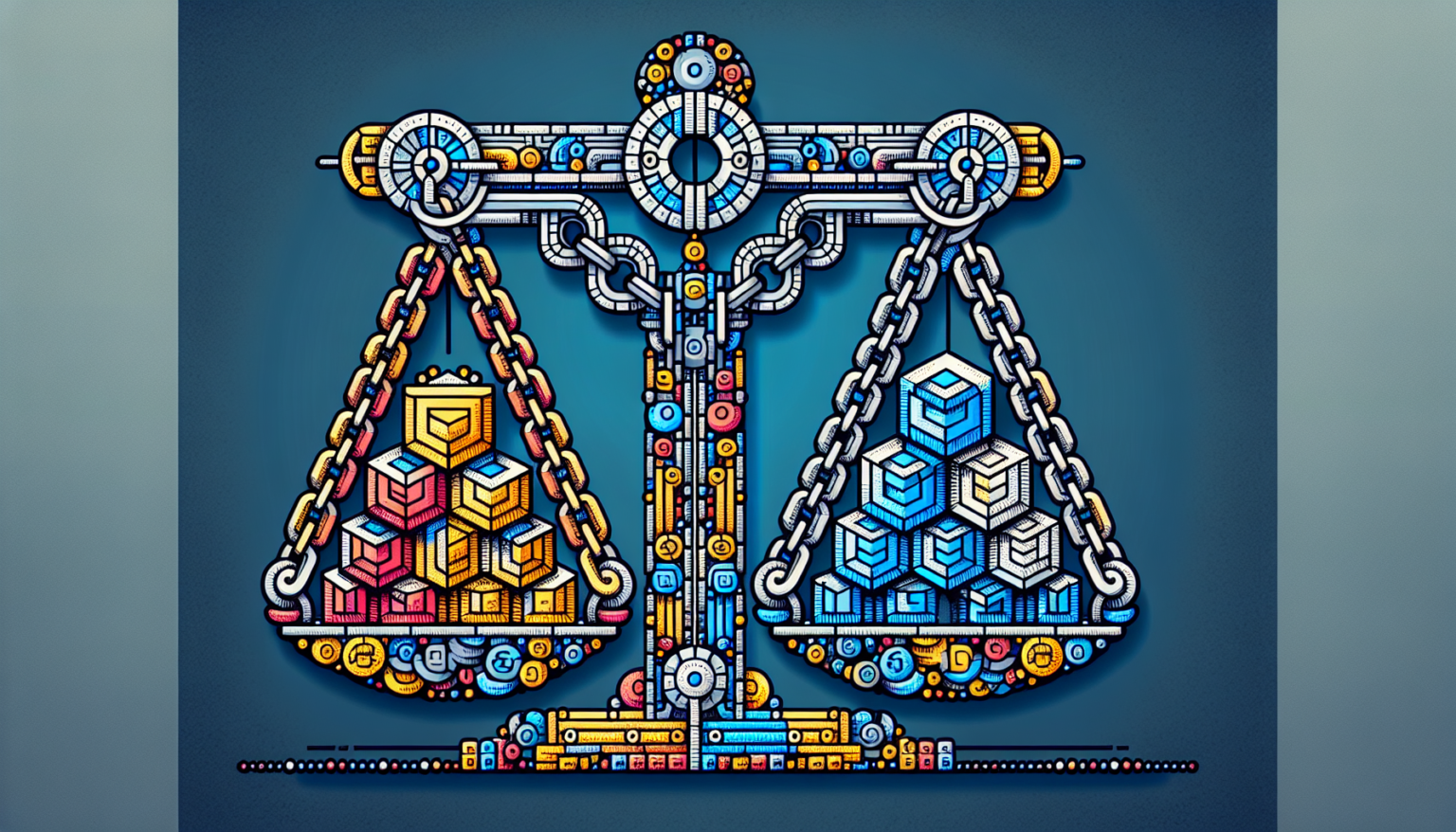Understanding Consensus Mechanisms
What Are Consensus Mechanisms?
Consensus mechanisms are the protocols that consider a transaction as valid and add it to the blockchain. They are essential for ensuring agreement among distributed nodes on the state of the ledger, thus maintaining the integrity and trustworthiness of the blockchain. Each consensus mechanism comes with its unique approach to achieving agreement, and it’s crucial to explore the advantages and disadvantages of these methods.
Proof of Work (PoW)
How It Works
Proof of Work, famously used by Bitcoin, requires miners to solve complex mathematical problems as a way to validate transactions and create new blocks. This process is resource-intensive and consumes significant computational power.
Pros of Proof of Work
1. **Security:** The complexity of mining makes it incredibly hard for attackers to compromise the network. Altering any information on a PoW blockchain would require substantial computational resources.
2. **Decentralization:** PoW promotes decentralization since any miner can participate if they have the right hardware. This prevents control from being concentrated in the hands of a few.
Cons of Proof of Work
1. **Energy Consumption:** PoW is notoriously energy-intensive. This raises concerns about environmental sustainability, especially as more miners join the network.
2. **Centralization Risk:** Although PoW is designed to be decentralized, in practice, mining pools can dominate. This creates a potential point of failure or control.
Proof of Stake (PoS)
How It Works
Proof of Stake selects validators based on the number of coins they hold and are willing to “stake” as collateral. This mechanism contrasts with PoW by not requiring exhaustive computations.
Pros of Proof of Stake
1. **Energy Efficiency:** PoS is significantly less energy-intensive than PoW, making it a more eco-friendly choice.
2. **Lower Barrier to Entry:** Users can participate as validators without needing expensive mining equipment, as long as they meet the minimum staking requirement.
Cons of Proof of Stake
1. **Wealth Concentration:** Since the likelihood of being chosen to validate blocks depends on the amount of cryptocurrency staked, PoS can lead to wealth concentration, where the rich get richer.
2. **Minimalistic Security:** While PoS is secure, critics argue that it is more vulnerable to a “nothing at stake” problem, where validators might act maliciously since there is little to lose.
Delegated Proof of Stake (DPoS)
How It Works
Delegated Proof of Stake is a variation of PoS. In DPoS, coin holders vote for a small number of delegates who then validate transactions on behalf of the network.
Pros of Delegated Proof of Stake
1. **Scalability:** DPoS can handle more transactions per second compared to PoW and traditional PoS, making it ideal for larger networks and applications.
2. **Democratic Process:** DPoS incorporates a more democratic system where users can vote for representatives, increasing community engagement.
Cons of Delegated Proof of Stake
1. **Centralization Risks:** With only a limited number of delegates, DPoS may lead to centralization risks if a small group retains power and influence over validation.
2. **Voter Apathy:** Low participation in delegate selection can lead to a lack of true representation, undermining the system’s democratic ideal.
Practical Byzantine Fault Tolerance (PBFT)
How It Works
PBFT is designed to reach consensus by having node replicas communicate with each other to agree upon the specific value of received transactions, ideally requiring a two-thirds majority to validate.
Pros of Practical Byzantine Fault Tolerance
1. **High Throughput:** PBFT can process a significant number of transactions per second compared to PoW or PoS, making it well-suited for enterprise solutions.
2. **Robustness Against Faults:** The protocol can tolerate a certain number of malicious nodes, making it resilient against attacks.
Cons of Practical Byzantine Fault Tolerance
1. **Network Size Limitations:** PBFT systems work best in smaller networks, as the communication overhead grows exponentially with the number of nodes.
2. **Complexity:** The algorithm is complicated and can be challenging to implement correctly, requiring a deeper understanding of distributed systems.
Proof of Authority (PoA)
How It Works
In Proof of Authority, a limited number of nodes are pre-approved as validators. These nodes are known and trusted, making PoA highly efficient.
Pros of Proof of Authority
1. **Fast Transactions:** PoA can offer near-instant transaction validation, making it attractive for private networks and enterprises requiring speed.
2. **Low Resource Usage:** Since fewer nodes are working on mining, PoA uses far less computational power.
Cons of Proof of Authority
1. **Centralization:** This model is more centralized than others, as it relies on a small number of trusted nodes. If those nodes are compromised, the entire network’s integrity is at risk.
2. **Limited Use Cases:** PoA might not be as suitable for public blockchains where decentralization is critical for user trust.
Hybrid Consensus Mechanisms
How They Work
Hybrid consensus mechanisms combine elements from different models, aiming to balance the strengths and weaknesses of each. For example, some blockchain projects utilize both PoW and PoS to secure their networks.
Pros of Hybrid Consensus Mechanisms
1. **Flexibility:** These systems can be tailored to meet specific needs, allowing for a balance between security, speed, and resource efficiency.
2. **Enhanced Security:** By incorporating multiple consensus approaches, hybrid systems can achieve a higher level of security and fault tolerance.
Cons of Hybrid Consensus Mechanisms
1. **Complex Implementation:** The integration of multiple systems can lead to increased complexity, potentially introducing new vulnerabilities.
2. **Interoperability Issues:** Different consensus models can sometimes face challenges in communicating effectively, affecting overall network efficiency.
The Future of Consensus Mechanisms
Emerging Trends and Innovations
As technology evolves, we can expect to see new consensus mechanisms and improvements on existing ones aimed at tackling current limitations. Innovations could include more energy-efficient protocols, hybrid systems that incorporate machine learning, or novel approaches like Proof of Knowledge, which emphasizes data utility and integrity.
The Importance of Adaptability
Looking ahead, the ability of consensus mechanisms to adapt to different environments and needs will be crucial. Whether it’s environmental impact, scalability, or decentralization, the most effective consensus mechanisms will likely be those that can evolve with the demands of users and technology alike.
By understanding the pros and cons of these various consensus mechanisms, individuals and organizations can make informed decisions that align with their goals, whether in blockchain development or strategic partnerships.








